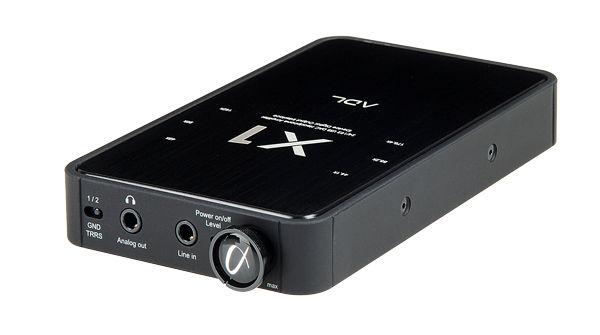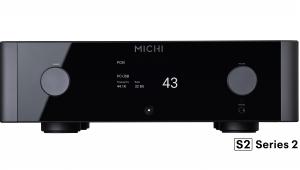Furutech Adl X1 (£400)

Six top-mounted LEDs display sampling frequency, and there’s a front fascia volume control – which sadly proved just a little too easy to accidentally move when out and about. Those on the Number 41 bus will doubtless prefer the ergonomic simplicity of, say, an Arcam rPAC or Cambridge Audio DacMagic XS, which are truly portable devices.
Build quality is superb, as you’d expect from a premium priced Japanese product and it feels like a well presented, luxury item. In fact, the ADL X1 is basically a brushed aluminium case enclosed in a rubberised plastic shell. Inside it boasts a 192kHz/24-bit ESS ES9023 DAC – a very ‘high-end’ chip.
It sports a front 3.5mm line input and a 3.5mm headphone socket together with on/off switch and volume control. At the rear is a combined 3.5mm optical/analogue out and two flavours of USB input including iDevice connectivity. Sample rate and battery status are indicated via coloured LEDs.
Open window
The Furutech ADL X1 offers a wonderfully clean and open window onto any recording, with generous insights into the texture of instruments and vocals. And it does this without sounding bright or harsh in any sense.
Indeed if anything it has a deeper and ‘darker’, character than many competing units – it contrasts strongly with Fostex’s
HP-A4 [HFN May ’14], which is very well lit. Nor does it have a thumpingly powerful nature, yet it still comes over as wonderfully engaging.
This was very obvious on Kate Bush’s ‘Snowflake’ – the 96kHz/24-bit download version was used from her 50 Words For Snow album [Fish People] – which was rendered with a very believable tonality. The piano was deep and powerful, showing the ADL X1’s strong but not over-prominent bass. Vocals were smooth and velvety – with scarcely any glassiness, and the phrasing was wonderfully subtle. The song gained a whole new level of emotional impact as a result.
David Bowie’s ‘Modern Love’, from Let’s Dance [EMI] was beautifully delivered, albeit not quite as ‘impressive’ in a hi-fi sense as with that ultra-punchy Fostex HP-A4. Still, drums sounded less splashy and carried more dynamic contrast. Vocals were smoother yet more believable, and the Furutech separated out the multiple elements of the mix in a more cohesive way, making it easier to hear the piano throughout.
Isaac Hayes’ ‘Bumpy’s Lament’ from Shaft, OST [Stax] took on wonderful warmth and fullness, and the Jon and Vangelis track ‘I Hear You Now’ from The Best Of Jon And Vangelis [Polydor] was also beautifully rendered, managing to convey the melody of the lead keyboards most convincingly. It’s not a showy performer, but the ADL is nevertheless blessed with a wonderful subtlety that makes you want to keep on listening.
Verdict
Aside from the on/off gain control which we found slightly fiddly, the ADL X1 is easy to move around and works as effectively as a portable as when it’s sitting next to your home computer. The rechargeable battery system works well, and the design is not lacking in features.
However, the real ace in its hand is the sound, which is not just excellent, but ‘special’ in that – while it’s not massively powerful [see our Lab Report, HFN May ’14, page 47] – at sensible levels you get the sort of subtlety you only normally
expect from high-end digital. It digs right down into a piece of music and brings every last bit to life, without ever sounding harsh or artificial.
Originally published in the 2014 Yearbook
























































